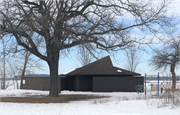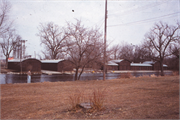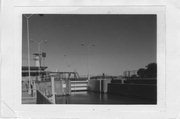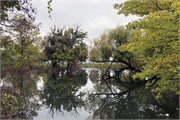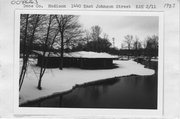1220 E. Johnson St.; 501 S. Thornton Ave.
| Historic Name: | Tenney Park--Yahara River Parkway |
|---|---|
| Reference Number: | 99001173 |
| Location (Address): | 1220 E. Johnson St.; 501 S. Thornton Ave. |
|---|---|
| County: | Dane |
| City/Village: | Madison |
| Township: |
| Tenney Park and theYahara River Parkway East Johnson at the Yahara River, Madison, Dane County Landscape Architects: Ossian Cole Simonds; John Nolen Date of Construction: 1900-1911 The Tenney Park and the Yahara River Parkway consist of a parkway running parallel to the Yahara River and a park at the juncture of the river and Lake Mendota. These sites reflect Madison's changing attitude toward its lakes and river. Once seen as a repository for trash and industrial effluent, early twentieth century Madisonians began to see these waterways as beautiful recreational landscapes. Tenney Park and the Yahara River Parkway owe their existence to the Madison Park and Pleasure Drives Association (MPPDA), under the persistent leadership of John Olin. This private organization developed around the turn of the twentieth century, creating pleasure drives for wealthy carriage owners. However, their purpose changed when property owners offered to sell 14 acres along Lake Mendota and the Yahara River at a considerably reduced price to be used as a city park. D.K. Tenney presented a challenge grant offering to buy all of the land, plus donate an additional $2500 in 1899 towards its development, provided that an additional $2500 was raised to match his grant. Supporters raised the matching funds through modest public subscriptions to the MPPDA as well as a grant from the Common Council. This successful partnership inspired a legacy of park philanthropy that provided funding for Brittingham, Vilas, Hollister, and Burrows Parks in Madison. Chicago landscape architect O.C. Simonds designed Tenney Park using native plantings and materials in a Prairie School style, which was a landscape counterpart to the work of Frank Lloyd Wright and other progressive Midwestern architects. The design called for a serpentine lagoon connected to the Yahara River, and three islands reached by footbridges. Famed city planner John Nolen worked on a later redesign of Tenney Park along with the development of the Yahara parkway. He recommended that the islands be filled in to create one large 10-acre island in the center, affording space for active recreational opportunities. This allowed more options for use and a larger number of people to use the space at one time. When the MPPDA completed the design in 1910, people flocked to the park and it soon became a greatly enjoyed space. The character of the Tenney Park and Yahara River Parkway remain very similar to their historic design, as the physical form of these sites and many of the original plantings are present. They continue to be enjoyed by many today, as well as the numerous other local parks they inspired.
|
| Period of Significance: | 1900-1924 |
|---|---|
| Period of Significance: | 1925-1949 |
| Area of Significance: | Community Planning And Development |
| Area of Significance: | Landscape Architecture |
| Applicable Criteria: | Event |
| Applicable Criteria: | Architecture/Engineering |
| Historic Use: | Landscape: Park |
| Architectural Style: | Prairie School |
| Resource Type: | Site |
| Architect: | Nolen, John |
| Architect: | Simonds, Ossian Cole |
| Historic Status: | Listed in the National Register |
|---|---|
| Historic Status: | Listed in the State Register |
| National Register Listing Date: | 09/17/1999 |
| State Register Listing Date: | 04/29/1999 |
| Number of Contributing Buildings: | 1 |
|---|---|
| Number of Contributing Sites: | 2 |
| Number of Contributing Structures: | 13 |
| Number of Contributing Objects: | 0 |
| Number of Non-Contributing Sites: | 2 |
| Number of Non-Contributing Structures: | 13 |
| Number of Non-Contributing Objects: | 0 |
| National Register and State Register of Historic Places, State Historic Preservation Office, Wisconsin Historical Society, Madison, Wisconsin |

